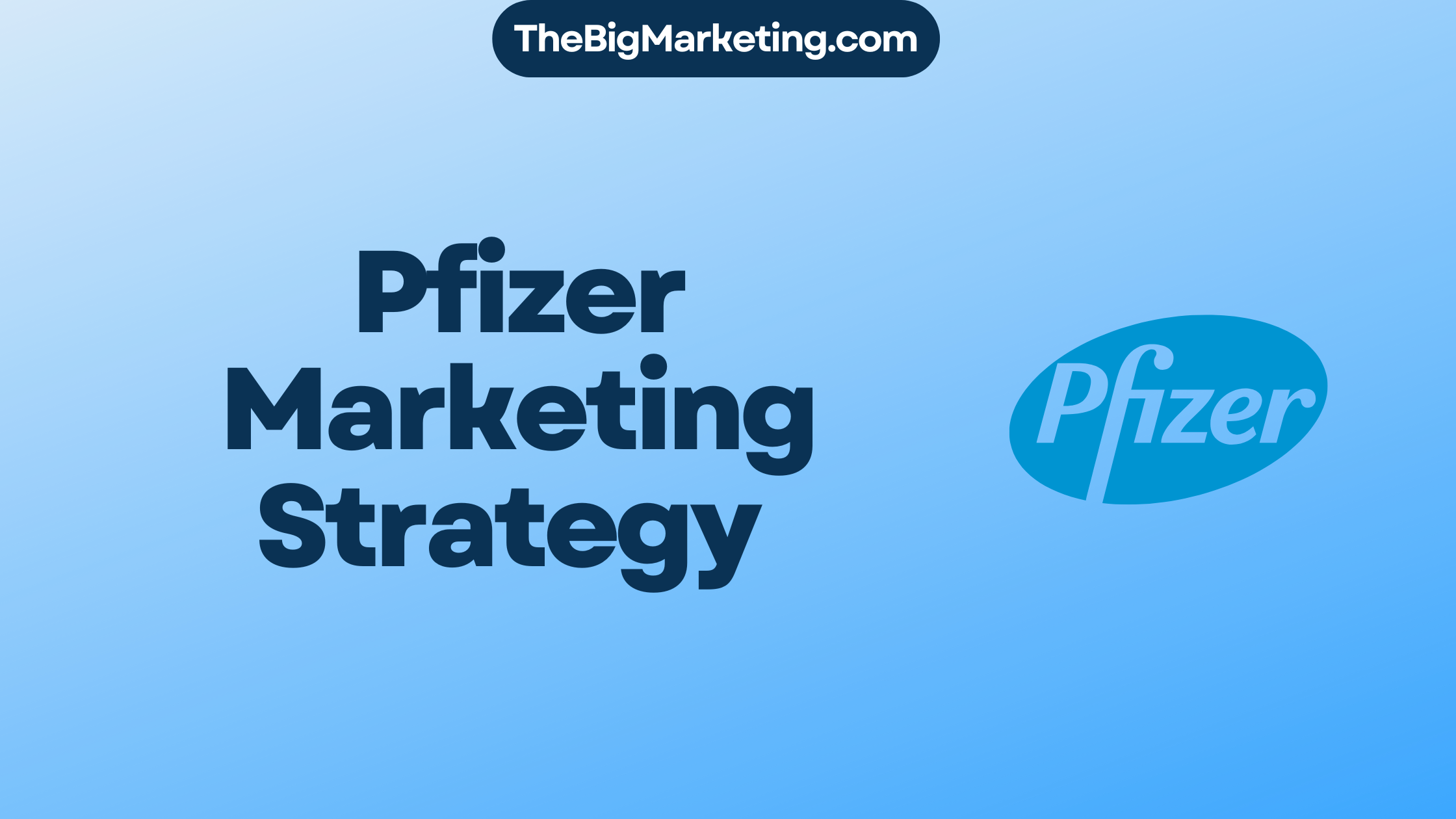As the pharmaceutical industry and healthcare space continue to face challenges such as rising prescription drug costs, increased competition from new market entrants, and regulatory uncertainties, it is essential for companies like Walgreens to adapt and strategize for the future. With its current performance in the stock market underwhelming, Walgreens must reevaluate its marketing strategy to regain momentum and drive growth.
In this case study, we will explore the current challenges in the pharmaceutical industry, Walgreens’ market position, its existing capabilities, and the gap it needs to bridge to succeed in the market. Additionally, we will discuss the opportunities available for Walgreens to pivot its brand, win back customers, leverage own-brand strategies, and form strategic partnerships to enhance its market positioning.
Key Takeaways:
- Walgreens is facing challenges in the pharmaceutical industry, including rising drug costs and increased competition.
- The company’s market position has been impacted by declining stock performance and criticism for questionable practices.
- Walgreens has a strong retail presence and offers a wide range of products, but it needs to develop adaptive marketing capabilities.
- The company has opportunities to enhance its branding, engage with customers through digital marketing, and invest in own-brand strategies.
- Walgreens aims to win back customers through targeted marketing efforts and patient outreach programs.
Current Challenges in the Pharmaceutical Industry
The healthcare space is undergoing significant challenges in the pharmaceutical industry, with rising drug costs, increased competition, and regulatory uncertainties affecting companies like Walgreens. These challenges have had a negative impact on Walgreens’ performance in the stock market, necessitating the implementation of strategic initiatives to address these issues.
Rising Drug Costs
One of the key challenges in the pharmaceutical industry is the continuous rise in prescription drug costs. This has resulted in higher healthcare expenses for patients and increased financial burden on healthcare providers. The rising drug costs not only impact the affordability of medications for consumers but also affect the profitability and financial performance of companies like Walgreens.
Increased Competition
The pharmaceutical industry has witnessed a surge in competition from new market entrants. With the introduction of generic drugs and the rise of digital health platforms, consumers have more options for accessing healthcare products and services. This heightened competition puts pressure on established players like Walgreens to stay ahead by offering unique value propositions and improving customer experiences.
Regulatory Uncertainties
Regulatory uncertainties add another layer of challenge for companies operating in the pharmaceutical industry. Changing regulations, such as healthcare reform policies and drug pricing regulations, can significantly impact the operations and profitability of companies like Walgreens. Adapting to these regulatory changes is crucial to ensure compliance and maintain a competitive edge.
| Challenges | Impact |
|---|---|
| Rising drug costs | Financial burden on consumers and companies |
| Increased competition | Pressure to differentiate and improve customer experiences |
| Regulatory uncertainties | Potential impact on operations and profitability |
Walgreens’ Current Market Position
Walgreens, one of the leading players in the pharmaceutical industry, has recently faced challenges in its market position. Its stock performance has shown a decline compared to the broader market index. This underperformance has raised concerns among investors and stakeholders.
One of the main reasons behind Walgreens’ struggles is the increased competition with retailers. Retail giants like Walmart have successfully implemented competitive pricing strategies, attracting a significant customer base and improving their bottom line. This intensified competition has posed a significant challenge for Walgreens, impacting its market share and profitability.
In addition to the competition, Walgreens has faced criticism and fines for questionable practices, such as over-distributing control substances and misleading advertising. These controversies have further tarnished the company’s reputation and eroded consumer trust.
An effective marketing strategy is crucial for Walgreens to improve its market position and regain lost ground. By addressing the challenges posed by competitors and rebuilding consumer trust, Walgreens can strengthen its presence in the pharmaceutical industry and enhance its stock performance.
Future Outlook
To overcome these obstacles and regain market dominance, Walgreens needs to focus on developing a comprehensive marketing strategy. This strategy should include:
- Enhancing competitive pricing strategies to attract price-conscious customers.
- Investing in innovative marketing campaigns to rebuild consumer trust and improve brand perception.
- Expanding partnerships with healthcare providers to offer additional value and services to customers.
- Leveraging digital platforms and technology to enhance customer experience and engagement.
With a well-executed marketing strategy, Walgreens can regain its competitive edge, improve its stock performance, and successfully navigate the challenges in the retail pharmaceutical market.
Analyzing Walgreens’ Current Capabilities
Walgreens has positioned itself strongly in the pharmaceutical industry by leveraging its robust network of retail stores and offering a diverse range of products. With a vast footprint of Walgreens retail stores across the United States, the company ensures convenient access to consumers throughout their lifespan. This extensive presence allows Walgreens to cater to the diverse needs of customers, providing them with a wide variety of products.
| Retail Stores | Product Offering | Private Label Brands |
|---|---|---|
| Over 9,000 retail stores nationwide | A comprehensive range of healthcare products, including prescription medications, over-the-counter drugs, personal care items, vitamins, and wellness products | Extensive private label brands, offering quality products at competitive prices |
Through strategic acquisitions and expansion, Walgreens has solidified its market presence and established itself as a trusted destination for customers seeking a wide selection of products.
Furthermore, Walgreens’ extensive product offerings go beyond traditional pharmacy items. The company also focuses on providing health and wellness solutions, including non-prescription healthcare products, beauty and personal care items, and essential items for daily living.
By offering private label brands, Walgreens promotes convenience and affordability for its customers. These brands are carefully designed to meet high-quality standards and provide customers with reliable alternatives to national brands.
Overall, Walgreens’ current capabilities, which include its multitude of retail stores and extensive product offerings, position the company as a reliable destination for consumers seeking a wide variety of healthcare and wellness products.
Identifying the Gap in Walgreens’ Capabilities
While Walgreens’ current capabilities provide convenience and availability, there is a need to develop adaptive marketing capabilities to provide superior consumer value. The company should focus on market-driven capabilities that enable better understanding of market conditions and the needs of consumers. By bridging this gap, Walgreens can enhance its competitive advantage and customer satisfaction.
Resource-Based Capabilities
Walgreens’ extensive footprint of retail stores and wide range of products serves as a valuable resource-based capability. The vast number of locations ensures convenient access to healthcare products and services for consumers across the country. Additionally, the variety of products offered caters to diverse consumer needs, providing a one-stop-shop experience.
Market-Driven Capabilities
To stay competitive in the ever-evolving pharmaceutical industry, Walgreens needs to focus on market-driven capabilities. This involves closely monitoring market trends, understanding consumer preferences, and designing targeted marketing strategies. By leveraging market intelligence, Walgreens can tailor its offerings to meet customer demands effectively.
By integrating resource-based capabilities with market-driven capabilities, Walgreens can optimize its operations and deliver enhanced value to consumers. This strategic approach will not only strengthen its competitive advantage but also foster customer loyalty in an increasingly competitive market.
| Resource-Based Capabilities | Market-Driven Capabilities |
|---|---|
| Extensive footprint of retail stores | Close monitoring of market trends |
| Wide range of products | Understanding consumer preferences |
| Convenient access to healthcare products | Designing targeted marketing strategies |
Opportunities for Walgreens to Pivot Its Brand
Walgreens has numerous opportunities to reshape its brand and create more engagement with customers. By focusing on customer engagement initiatives, implementing effective digital marketing strategies, and leveraging social media platforms, Walgreens can significantly improve its market positioning and consumer perception. Additionally, investing in own-brand strategies can further strengthen the company’s position in the health and wellness categories.
Customer Engagement Initiatives
Walgreens can enhance its customer engagement by implementing initiatives such as loyalty programs and personalized marketing campaigns. By leveraging customer data and preferences, Walgreens can deliver targeted promotions and offers that resonate with its audience. Moreover, investing in customer feedback mechanisms and incorporating their input into decision-making processes can boost customer satisfaction and loyalty.
Digital Marketing Strategies
With the increasing dominance of digital platforms, Walgreens must adopt robust digital marketing strategies to reach and engage customers effectively. This can include search engine optimization (SEO) techniques to improve online visibility, social media advertising to amplify brand messaging, and email marketing to nurture customer relationships. By integrating innovative technologies and analytics, Walgreens can optimize its digital marketing efforts and drive customer acquisition and retention.
Leveraging Social Media Platforms
Social media platforms provide an excellent opportunity for Walgreens to connect with its target audience and build brand loyalty. By consistently posting engaging content, responding to customer queries and feedback, and collaborating with influencers, Walgreens can create a strong online presence. Leveraging social media platforms also allows Walgreens to showcase its commitment to health and wellness, share educational content, and promote its product offerings.
Investing in Own-Brand Strategies
Walgreens can strengthen its position in the health and wellness categories by investing in own-brand strategies. By expanding its range of private label products, Walgreens can offer customers affordable alternatives while maintaining quality standards. This not only improves profit margins but also enhances brand loyalty and customer trust.
Walgreens’ Marketing Strategy for Customer Win-back
Walgreens recognizes the importance of retaining customers and aims to win back lapsed customers through targeted marketing efforts and patient outreach programs. The company understands that customer retention is crucial for long-term success and is willing to make significant investments in marketing and labor to achieve this goal.
One of the key strategies Walgreens plans to implement is a data-driven approach. By utilizing data analysis and customer insights, the company can identify the reasons customers have lapsed and tailor its marketing efforts accordingly. This targeted approach allows Walgreens to address specific concerns and offer personalized solutions to win back lost customers.
Furthermore, Walgreens intends to emphasize improved service levels as a means to regain trust. By focusing on enhancing the customer experience through exceptional service, the company aims to rebuild relationships with lapsed customers. This includes investing in employee training programs to ensure that staff members are equipped with the necessary skills to provide the highest level of customer service.
In addition to targeted marketing and improved service, Walgreens is implementing patient outreach programs. By actively engaging with patients and providing valuable resources, the company aims to demonstrate its commitment to their well-being. These programs can include initiatives such as health education campaigns, medication adherence support, and personalized consultations.
Through these comprehensive strategies, Walgreens is determined to win back lapsed customers, improve customer retention rates, and rebuild its market position. By investing in marketing and labor, focusing on data-driven strategies, and emphasizing improved service levels, Walgreens aims to convince customers to return and regain their trust.
Leveraging Own-brand Strategies for Competitive Advantage
Walgreens recognizes the potential of own-brand initiatives in competing and driving profits in the health and wellness categories. By developing a strong portfolio of own-brand products, Walgreens aims to establish itself as a trusted provider of quality healthcare and wellness solutions.
Expanding Owned Brand Positions
Walgreens plans to expand its owned brand positions across various health and wellness categories, catering to the diverse needs of its customers. With a focus on product innovation and customer-centricity, Walgreens aims to offer unique and high-value own-brand alternatives to popular national brands.
| Benefits of Own-brand Initiatives |
|---|
| 1. Greater Control: By offering own-brand products, Walgreens can maintain better control over the quality, pricing, and availability of its offerings. |
| 2. Differentiation: Own-brand initiatives allow Walgreens to differentiate itself from competitors, offering exclusive products that can’t be found elsewhere. |
| 3. Profitability: Higher profit margins can be achieved through own-brand sales, as the company has more control over pricing and sourcing. |
| 4. Customer Loyalty: By providing quality own-brand products, Walgreens can build customer loyalty and increase repeat purchases. |
Transforming Customer Value
Walgreens understands the importance of customer value in the health and wellness industry. Through its own-brand initiatives, the company aims to transform customer value by offering affordable, reliable, and effective solutions for health and wellness needs.
By leveraging its wide retail network, Walgreens ensures that customers have convenient access to a comprehensive range of own-brand products in various categories, including over-the-counter medications, vitamins and supplements, personal care items, and more. This accessibility enhances the overall customer experience and reinforces Walgreens’ position as a one-stop destination for health and wellness needs.
With the implementation of these own-brand strategies, Walgreens aims to further solidify its presence in the health and wellness categories, driving customer satisfaction and loyalty while differentiating itself from competitors.
Strategic Partnership with Managed Healthcare Provider
To develop adaptive marketing capabilities and provide superior consumer value, it is recommended that Walgreens consider a strategic partnership or acquisition of a managed healthcare provider. By partnering with established companies like Cigna or Health Care Service Corporation (HCSC), Walgreens can leverage synergies and strengthen its capabilities in the healthcare space.
A partnership with a healthcare provider would enable Walgreens to gain valuable insights into market conditions and better understand the evolving needs of consumers. This collaboration would also allow Walgreens to offer a comprehensive range of healthcare services, enhancing its value proposition and consumer appeal.
Through a strategic partnership, Walgreens can leverage the healthcare provider’s expertise and network to expand its healthcare offerings. This would not only provide superior consumer value but also position Walgreens as a trusted partner in managing the healthcare needs of its customers.
By combining the resources and expertise of both companies, Walgreens can create a seamless and integrated healthcare experience for its customers. This would include services such as prescription management, preventive care programs, and chronic disease management, all conveniently accessible at Walgreens’ retail locations.
Furthermore, a strategic partnership with a managed healthcare provider would allow Walgreens to tap into new revenue streams and diversify its business model. This would strengthen the company’s position in the market and provide a competitive advantage over other retailers.
| Benefits of a Partnership with a Managed Healthcare Provider | Key Considerations |
|---|---|
| Access to expertise in healthcare management and operations | Alignment of strategic goals and values |
| Ability to offer comprehensive healthcare services | Integration of systems and processes |
| Enhanced consumer trust and loyalty | Regulatory compliance and legal considerations |
| New revenue streams and business opportunities | Effective communication and collaboration |
By forming a strategic partnership with a managed healthcare provider, Walgreens can position itself as a leader in the healthcare industry, providing superior consumer value and driving sustainable growth.
Conclusion
Walgreens’ marketing strategy plays a crucial role in navigating the challenges faced in the pharmaceutical industry. With rising costs, increased competition, and regulatory uncertainties, the company has successfully identified the need for new dynamic capabilities to stay ahead in the market.
By focusing on customer engagement and digital marketing, Walgreens aims to enhance its market positioning and rebuild consumer trust. Through strategic partnerships with managed healthcare providers, the company can strengthen its capabilities and offer superior consumer value.
These initiatives are the key to improving Walgreens’ bottom line and shaping market perception in the ever-evolving healthcare space. By investing in these strategic endeavors, Walgreens is poised to deliver exceptional consumer value and maintain its position as a leading player in the pharmaceutical industry.
FAQ
What are some of the challenges facing the pharmaceutical industry and healthcare space?
The pharmaceutical industry and healthcare space are facing challenges such as rising prescription drug costs, increased competition from new market entrants, and regulatory uncertainties.
How has Walgreens performed in the stock market?
Walgreens has experienced a decline in its market cap compared to the broader market index.
What competitive challenges does Walgreens face?
Retailers like Walmart have improved their bottom line through competitive pricing strategies, posing a challenge to Walgreens.
What are some of Walgreens’ current capabilities?
Walgreens has a massive footprint of retail stores and offers a wide range of products, including private label brands.
What is the gap in Walgreens’ capabilities?
Walgreens needs to develop adaptive marketing capabilities to provide superior consumer value and better understand market conditions and consumer needs.
How can Walgreens pivot its brand and engage with more customers?
Walgreens can pivot its brand and engage with more customers through customer engagement initiatives, digital marketing strategies, and leveraging social media platforms.
What is Walgreens’ marketing strategy for customer win-back?
Walgreens plans to invest in marketing and labor to win back customers, focusing on data-driven strategies and emphasizing improved service levels.
How can Walgreens leverage own-brand strategies for competitive advantage?
Walgreens aims to expand its own-brand positions and cover all relevant categories to compete and drive profits in the health and wellness categories.
Should Walgreens consider a strategic partnership with a managed healthcare provider?
Yes, a strategic partnership with a managed healthcare provider such as Cigna or Health Care Service Corporation (HCSC) can provide synergies and strengthen Walgreens’ capabilities in the healthcare space.
How can Walgreens enhance its market positioning and rebuild consumer trust?
Walgreens can enhance its market positioning and rebuild consumer trust by investing in new dynamic capabilities, focusing on customer engagement and digital marketing, and leveraging strategic partnerships.








